The Struggle and Triumph of America’s First Black Doctors
African American physicians have dealt with distrust and misperceptions for more than a century
(Pictured: John Henry Jordan, the first black doctor in Coweta County, Georgia, with his wife, Mollie, and his son, Edward)
African American doctors still face barriers when it comes to educational opportunities and advancement in their careers. In 2015, they made up around 6 percent of practicing physicians in America—an increase of only a few percentage points since the middle of the 20th century.
However, starting out as an African American physician at the end of the 19th century was a daunting task, to say the least. Upon entering the profession, white doctors would join the American Medical Association, or AMA, an organization founded in 1847 that outlined standards for medical education and focused on improving public health. Doctors had to be members of the AMA to practice at hospitals. While the AMA claimed not to discriminate, it left membership decisions up to its local chapters, which made an African American doctor hard pressed to find a chapter that would accept him, particularly in the South.
There were other obstacles, too. African American physicians often were unable to get specialized training. They had to compete for African American patients who could actually pay. Limitations like these fueled what Thomas Ward, the author of Black Physicians in the Jim Crow South considers a “self-fulfilling prophecy”: “Black physicians were usually excluded from being able to practice at any of the hospitals in the South,” he says. “So if you’ve got a doctor who can’t practice at the hospital, and you think he’s inferior anyway, that seems to prove he’s inferior.”
In response to being barred from the AMA, African American doctors—along with dentists and pharmacists—founded the National Medical Association, or NMA, in 1895. The NMA is still thriving today and focuses on promoting the interests of African American doctors as well as supporting healthcare for African Americans and those from underserved communities. (Read more)
A Wrenching Decision Where Black History and Floods Intertwine

Books and papers drying in the Princeville Fire Department’s former garage. (Credit: Travis Dove for The New York Times)
Princeville, N.C., population 2,100, is believed to be the oldest town chartered by freed slaves. The community has survived numerous floods and the Jim Crow era and remains 96 percent black. However, residents are considering the prospect of leaving their town after enduring a 100-year flood for the second time in 17 years. They could sell their homes to the Federal Emergency Management Agency, something that the town’s leaders voted down in 1999, fearing it would lead to the end of their community.
“This is home, this is what I know,” said one resident who was leaning toward staying but worried about taking out a loan to rebuild. “I really don’t know.”
The consideration has a wrenching historical dimension. This is where a freed slave, Turner Prince, established Freedom Hill in 1865, which became Princeville 20 years later, a town where extended families have proudly lived for generations northeast of Raleigh. And many of them are determined to rebuild.
This stretch along the Tar River is no stranger to flooding, and some say that it is probably the reason that African-Americans were able to settle the land in the first place. White landowners in the 19th century did not want it. (Read more)
Black College Football Player of the Year Award finalists announced
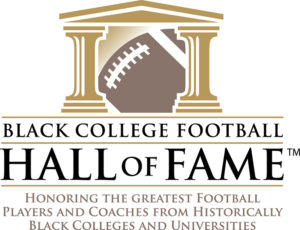 The Black College Football Hall of Fame (BCFHOF) announced today four finalists for the inaugural Black College Football Player of the Year Award.
The Black College Football Hall of Fame (BCFHOF) announced today four finalists for the inaugural Black College Football Player of the Year Award.
The finalists include QB Malcolm Bell (North Carolina Central University), RB Tarik Cohen (North Carolina A&T University), QB DeVante Kincade (Grambling State University) and RB Lenard Tillery (Southern University).
The finalists were chosen by a five-member Selection Committee composed of Black College Football Hall of Fame founders James “Shack” Harris and Doug Williams, Sheridan Broadcast Network’s Director of Sports Ty Miller, former USA Today sports writer Roscoe Nance, and ESPN College Football Analyst Jay Walker.
The winner of the award, to be announced on February 25, 2017 at the Eighth Annual Black College Football Hall of Fame Induction Ceremony in Atlanta, will be presented with the Deacon Jones Trophy, named in honor of the football legend and inaugural BCFHOF inductee who played at South Carolina State and Mississippi Valley. Jones had a Pro Football Hall of Fame career as a fierce pass rusher who crafted the term “(quarterback) sack” as part of the Los Angeles Rams’ “Fearsome Foursome” defensive line.
“Players from Historically Black Colleges and Universities have had a tremendous impact on the game of football,” said BCFHOF founder and 2012 inductee James Harris. “This award will allow us to highlight the great student athletes from today’s HBCUs and recognize them in front of the legends that paved the way.” (Read more)
Henry Clay Anderson’s photographs
This portrait of a young girl enjoying Christmas in Greenville, Miss., was taken by Henry Clay Anderson (1911- 1998) and is one of thousands of images by Anderson in the photography collections of the Smithsonian’s National Museum of African American History and Culture. Anderson’s postwar pictures of everyday life in the segregated black community in Greenville, taken from the 1940s through the 1970s, document a wide range of community subjects such as weddings, funerals, formal dances, families, soldiers, high-school portraits, sports events, working professionals, nightclub entertainers, parades and Civil Rights gatherings.
In 2007, Shawn Wilson and Charles Schwartz published Separate But Equal: The Mississippi Photographs of Henry Clay Anderson, a book that highlighted Anderson’s work and unveiled his remarkable perspective into African-American life. An exhibit of Anderson’s photographs in New York City that same year portrayed his photographs as documenting “a virtually ignored chapter in African-American history, that of the proud, dignified community of middle-class African-Americans that existed throughout the South during the Civil Rights Movement. They intimately portray a community of black Southerners who considered themselves first-class citizens despite living in a deeply hostile America.” (Read more and see more images)
TIPHC Bookshelf
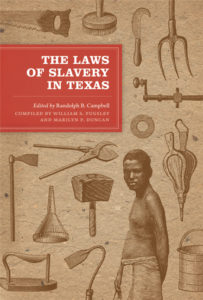 Published scholarship on black history in Texas is growing and we’d like to share with you some suggested readings, both current and past, from some of the preeminent history scholars in Texas and beyond. We invite you to take a look at our bookshelf page — including a featured selection — and check back as the list grows. A different selection will be featured each week. We welcome suggestions and reviews. This week, we offer, “The Laws of Slavery In Texas,” edited by Randolph B. Campbell.
Published scholarship on black history in Texas is growing and we’d like to share with you some suggested readings, both current and past, from some of the preeminent history scholars in Texas and beyond. We invite you to take a look at our bookshelf page — including a featured selection — and check back as the list grows. A different selection will be featured each week. We welcome suggestions and reviews. This week, we offer, “The Laws of Slavery In Texas,” edited by Randolph B. Campbell.
The laws that governed the institution of slavery in early Texas were enacted over a fifty-year period in which Texas moved through incarnations as a Spanish colony, a Mexican state, an independent republic, a part of the United States, and a Confederate state. This unusual legal heritage sets Texas apart from the other slave-holding states and provides a unique opportunity to examine how slave laws were enacted and upheld as political and legal structures changed. The Laws of Slavery in Texas makes that examination possible by combining seminal historical essays with excerpts from key legal documents from the slave period and tying them together with interpretive commentary by the foremost scholar on the subject, Randolph B. Campbell.
Campbell’s commentary focuses on an aspect of slave law that was particularly evident in the evolving legal system of early Texas: the dilemma that arose when human beings were treated as property. As Campbell points out, defining slaves as moveable property, or chattel, presented a serious difficulty to those who wrote and interpreted the law because, unlike any other form of property, slaves were sentient beings. They were held responsible for their crimes, and in numerous other ways statute and case law dealing with slavery recognized the humanness of the enslaved. Attempts to protect the property rights of slave owners led to increasingly restrictive laws—including laws concerning free blacks—that were difficult to uphold. The documents in this collection reveal both the roots of the dilemma and its inevitable outcome.
This Week In Texas Black History, Dec. 11-17
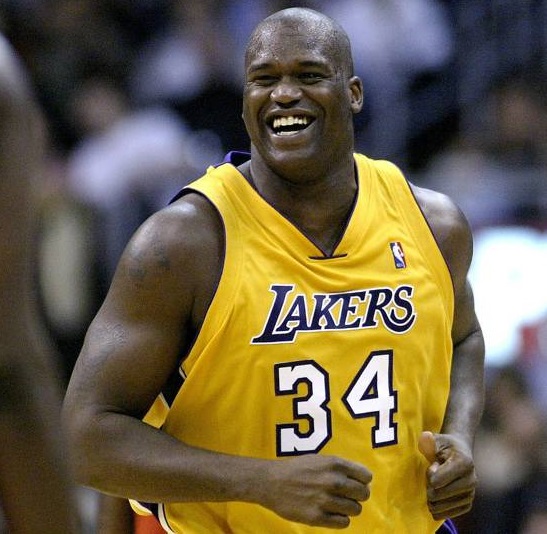 11 — On this day in 1912, Heman Marion Sweatt was born in Houston. In 1946, Sweatt, a graduate of Wiley College, challenged the admissions policy at the University of Texas law school. He teamed with the NAACP, which was looking to test separate but equal education statutes in Texas. Sweatt’s legal battle struck down segregationist policies at the UT law school, gained him admission, and paved the way for the landmark decision of Brown v. Board of Education in 1954.
11 — On this day in 1912, Heman Marion Sweatt was born in Houston. In 1946, Sweatt, a graduate of Wiley College, challenged the admissions policy at the University of Texas law school. He teamed with the NAACP, which was looking to test separate but equal education statutes in Texas. Sweatt’s legal battle struck down segregationist policies at the UT law school, gained him admission, and paved the way for the landmark decision of Brown v. Board of Education in 1954.
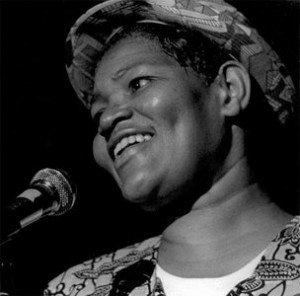 11 – Texas blues pioneer Willie Mae “Big Mama” Thornton was born on this day in 1926 in Montgomery, Alabama. Thornton left home in 1941 to pursue her musical career, eventually settling in Houston in 1948. Her 1952 recording of “Hound Dog” was later a huge hit for Elvis Presley, and her song “Ball and Chain” was made famous by Janis Joplin.
11 – Texas blues pioneer Willie Mae “Big Mama” Thornton was born on this day in 1926 in Montgomery, Alabama. Thornton left home in 1941 to pursue her musical career, eventually settling in Houston in 1948. Her 1952 recording of “Hound Dog” was later a huge hit for Elvis Presley, and her song “Ball and Chain” was made famous by Janis Joplin.
12 — The Ashworth Act was passed by the Texas Congress on this day in 1840 in response to an act passed on February 5, 1840 which prohibited free blacks from living in the Republic of Texas. The Ashworth Act was targeted towards certain free blacks (primarily a family of blacks named Ashworth who had “contributed generously” during the Texas Revolution), but generally said that “all free persons of color together with their families, who were residing in Texas the day of the state’s Declaration of Independence” (March 2, 1836) could remain in the state. Other free blacks had two years to vacate Texas or be sold into slavery. (See TIPHC Bookshelf, “The Laws of Slavery In Texas.”)
 13 – On this day in 1967, actor and comedian Eric Marlon Bishop was born in Terrell. In 1989, Bishop changed his name to Jamie Foxx in an effort to get more performance time as a stand-up comic at a Los Angeles club. As an actor, he became the first African American to receive two acting Oscar nominations in the same year (2004) for two different movies, Collateral and Ray.
13 – On this day in 1967, actor and comedian Eric Marlon Bishop was born in Terrell. In 1989, Bishop changed his name to Jamie Foxx in an effort to get more performance time as a stand-up comic at a Los Angeles club. As an actor, he became the first African American to receive two acting Oscar nominations in the same year (2004) for two different movies, Collateral and Ray.
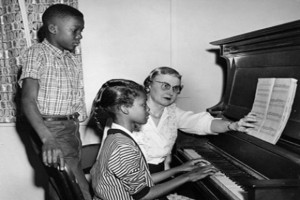 14 – On this day in 1978, Iola Bowden Chambers, co-founder and director of the Negro Fine Arts School in Georgetown, died in Brownwood. Bowden was a native of Holder and received a diploma in piano in 1926 from the Washington Conservatory of Music. She returned to Texas and taught music at Southwestern University where she and three of her students began teaching piano to black children in Georgetown as the Negro Fine Arts School. The program was sponsored by the Student Christian Association at Southwestern University and classes were held at the First Methodist Church of Georgetown. Over 200 students participated in the school during its existence from 1946 to 1966. The program held an annual recital but also awarded college scholarships. One former teacher said the basic impact of the organization was “the realization of the power of music as a universal language to transcend racial and cultural barriers.”
14 – On this day in 1978, Iola Bowden Chambers, co-founder and director of the Negro Fine Arts School in Georgetown, died in Brownwood. Bowden was a native of Holder and received a diploma in piano in 1926 from the Washington Conservatory of Music. She returned to Texas and taught music at Southwestern University where she and three of her students began teaching piano to black children in Georgetown as the Negro Fine Arts School. The program was sponsored by the Student Christian Association at Southwestern University and classes were held at the First Methodist Church of Georgetown. Over 200 students participated in the school during its existence from 1946 to 1966. The program held an annual recital but also awarded college scholarships. One former teacher said the basic impact of the organization was “the realization of the power of music as a universal language to transcend racial and cultural barriers.”
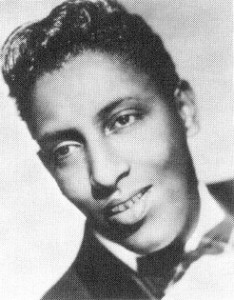 15 – Jesse Belvin, R&B singer and songwriter, was born on this day in 1932 in San Antonio (some accounts say Texarkana, Texas). At the age of five, Belvin moved with his family to Los Angeles. Known by some as the “Black Elvis,” Belvin’s most popular hit was “Good Night My Love,” which reached No. 7 on the R&B charts in 1956. He also wrote the song “Earth Angel” which was a hit for the Penguins and sold over a million copies in 1954.
15 – Jesse Belvin, R&B singer and songwriter, was born on this day in 1932 in San Antonio (some accounts say Texarkana, Texas). At the age of five, Belvin moved with his family to Los Angeles. Known by some as the “Black Elvis,” Belvin’s most popular hit was “Good Night My Love,” which reached No. 7 on the R&B charts in 1956. He also wrote the song “Earth Angel” which was a hit for the Penguins and sold over a million copies in 1954.
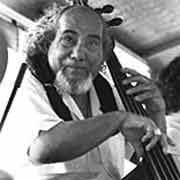 17 – On this day in 1933, jazz bassist Walter Booker was born in Prairie View, Texas. Booker moved to Washington, D.C. at an early age when his father joined the faculty at Howard University. Booker became an elite bassist playing with many prominent jazz performers, including Sarah Vaughan, Chick Corea, Donald Byrd, Sonny Rollins and Thelonius Monk. Booker played on more than 275 albums and in the late 1950s, while serving in the Army in Europe, was in the same unit as Elvis Presley.
17 – On this day in 1933, jazz bassist Walter Booker was born in Prairie View, Texas. Booker moved to Washington, D.C. at an early age when his father joined the faculty at Howard University. Booker became an elite bassist playing with many prominent jazz performers, including Sarah Vaughan, Chick Corea, Donald Byrd, Sonny Rollins and Thelonius Monk. Booker played on more than 275 albums and in the late 1950s, while serving in the Army in Europe, was in the same unit as Elvis Presley.
Blog: Ron Goodwin, author, PVAMU history professor
 Ron Goodwin’s bi-weekly blog appears exclusively for TIPHC/TBHPP. Goodwin is a San Antonio native and Air Force veteran. Generally, his column will address contemporary issues in the black community and how they relate to black history. He and the TIPHC/TBHPP staff welcome your comments. His latest blog is, “Miscellaneous Musings.” Read it
Ron Goodwin’s bi-weekly blog appears exclusively for TIPHC/TBHPP. Goodwin is a San Antonio native and Air Force veteran. Generally, his column will address contemporary issues in the black community and how they relate to black history. He and the TIPHC/TBHPP staff welcome your comments. His latest blog is, “Miscellaneous Musings.” Read it
Submissions Wanted
Historians, scholars, students, lend us your…writings. Help us produce the most comprehensive documentation ever undertaken for the African American experience in Texas. We encourage you to contribute items about people, places, events, issues, politics/legislation, sports, entertainment, religion, etc., as general entries or essays. Our documentation is wide-ranging and diverse, and you may research and write about the subject of your interest or, to start, please consult our list of suggested biographical entries and see submission guidelines. However, all topics must be approved by TIPHC/TBHPP editors before beginning your research/writing.
We welcome your questions or comments via email or telephone – mdhurd@pvamu.edu.

